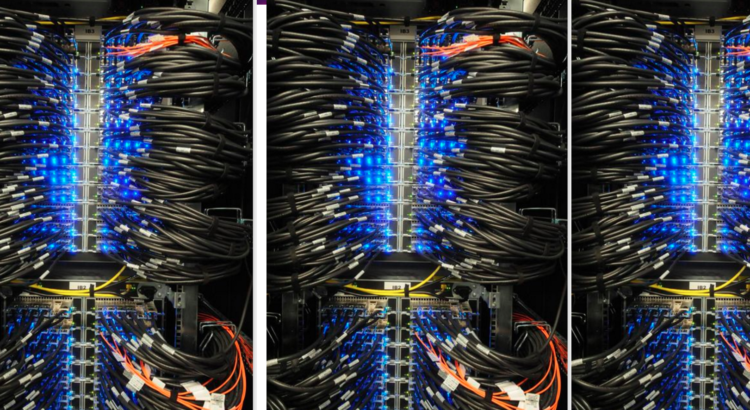In July 2014, IEEE 802.3 voted to form a Study Group for 25Gb/s Ethernet. There has been a lot attention in the networking press lately about 25Gb/s Ethernet, but many people are asking what is it and how did we get here. After all, 802.3 already has completed standards for 40Gb/s and 100Gb/s and is currently working on 400Gb/s, so from a pure speed perspective, starting a 25Gb/s project now does look like a step backwards.
(Warning: the following discussion contains excessive physical layer jargon.)
The Sweet Spot
25GbE as a port speed is attractive because it makes use of 25Gb/s per lane signaling technology that has been in development for years in the industry, culminating in the recent completion of 802.3bj, the standard for 100GbE over backplane or twinax copper that utilizes four parallel lanes of 25Gb/s signaling to achieve the 100Gb/s port speed. Products implementing 25Gb/s signaling in CMOS technology are just starting to come to market, and the rate will likely be a sweet spot for many years, as higher rate signaling of 40Gb/s or 50Gb/s is still in early technology development phases. The ability to implement this high speed I/O in CMOS is important because it allows combining high-speed I/O with many millions of logic gates needed to implement Ethernet switches, controllers, FPGAs, and microprocessors. Thus specifying a MAC rate of 25Gb/s to utilize 25Gb/s serdes technology can enable product developers to optimize for both the lowest cost/bit and the highest overall bandwidth utilization of the switching fabric.
4-Lane to 1-Lane Evolution
To see how we got here and why 25Gb/s is interesting, it is useful to back up a couple of generations and look at 10Gb/s and 40Gb/s Ethernet. Earliest implementations of 10GbE relied on rather wide parallel electrical interfaces: XGMII and the 16-Bit interface. Very soon after, however, 4-lane serdes-based interfaces became the norm starting with XAUI (for chip-to-chip and chip-to-optical module use) which was then adapted to longer reaches on twinax and backplane (10GBASE-CX4 and 10GBASE-KX4). Preceding 10GbE achieving higher volumes (~2009) was the specification and technical feasibility of 10Gb/s on a single electrical serial lane. XFI was the first followed by 10GBASE-KR (backplane) and SFI (as an optical module interface and for direct attach twinax cable using the SFP+ pluggable form factor). KR and SFI started to ramp around 2009 and are still the highest volume share of 10GbE ports in datacenter applications. The takeaway, in my opinion, is that single-lane interfaces helped the 10GbE volume ramp by reducing interconnect cost. Now look forward to 40GbE and 10GbE. The initial standard, 802.3ba, was completed in 2010. So during the time that this specification was being developed, 10Gb/s serial interfaces were gaining traction, and consensus formed around the use of multiple 10Gb/s lanes in parallel to make the 40GbE and 100GbE electrical interfaces. For example, there is a great similarity between 10GBASE-KR, and one lane of the 40GBASE-KR4 four-lane interface. In a similar fashion 10Gb/s SFI for twinax & optics in the SFP+ form factor is similar to a lane of the 40GbE equivalent interfaces for twinax and optics in the QSFP+ form factor.
But how does this get to 25Gb/s?
Due to the similarity in technology needed to make 10GbE and 40GbE, it has because a common feature in Ethernet switch and NIC chips to implement a four-lane port for 40GbE that can be configured to use each lane separately yielding four 10GbE ports.
From there it is a natural extension that 100GbE ports being implemented using 802.3bj technology (4x25Gb/s) also can be configured to support four independent ports operating at 25Gb/s. This is such a natural conclusion that multiple companies are implementing 25GbE even though it is not a standard.
In some environments, the existence of a standard is not a priority. For example, when a large-scale datacenter of compute, storage and networking is architected, owned and operated by one entity, that entity validates the necessary configuration to meet its requirements. For the broader market, however, there is typically a requirement for multi-vendor interoperability across a diverse set of configurations and uses. This is where Ethernet and IEEE 802.3 has provided value to the industry for over 30 years.
Where’s the Application?
Given the nature of their environment, it is the Cloud datacenter operators that are poised to be the early adopters of 25GbE. Will it also find a home in more traditional enterprise and storage markets? Time will tell, but in many environments ease of use, long shelf life, and multi-vendor interoperability are the priorities. For any environment, having the 25GbE specification maintained IEEE 802.3 will facilitate those needs.

